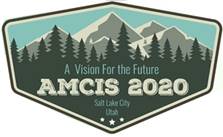Abstract
Individuals’ decision-making behavior cannot be completely rational, which is partly due to cognitive biases. Decision-makers unconsciously introduce biases in their cognitive process, thus affecting decision-making. The causes and effects of cognitive biases have been extensively discussed in the field of psychology. With the advancements in information technology and emergence of new information systems, an increasing amount of information is being obtained through information systems, and decisions are being made by either relying on or with the assistance of these systems. Whether information systems will aggravate cognitive biases in the process of decision-making, or will assist decision-makers in avoiding or reducing the effects of cognitive biases, is currently the focus of attention. George et al. (2000) tried to use a decision support system to generate warnings to prompt users to be aware of anchoring effects and adjust for biases; however, with the design of a single warning mode at that time, the debiasing effect was highly limited, suggesting that personalized suggestions or warnings could be provided subsequently. On the other hand, Frederick (2005) developed the “Cognitive Reflection Test” (CRT) with only three questions. Based on a solid theoretical foundation and a great amount of verification results, CRT can easily and accurately measure cognitive ability. Empirical findings reveal that CRT is correlated with time preference and risk preference: that is, people with high CRT scores are more cautious and tend to have risk preference and risk propensity. On the contrary, people with low CRT scores are more inclined to quick-thinking, dislike risks, and are less adventurous. This creates an opportunity for personalized warnings. We can quickly distinguish the cognitive styles of decision-makers and understand their risk preference through CRT, and then provide corresponding warning messages, thereby improving the debiasing effect of warnings and reducing the cognitive biases of decision-makers. This study intends to identify decision-makers with different cognitive styles through CRT, investigate the influences of anchoring effects on decision-makers with different cognitive styles as well as the moderating effect of warning modes on anchoring effects, and try to identify the fit of decision-makers’ cognitive styles and warning modes to eliminate anchoring effects. Valuation is chosen as the scenario. It is hoped that the findings of this study can provide some reference for the design of decision support systems in the future. The main purpose of this study is to investigate how different reference anchor point settings affect decision-makers in the evaluation process. The independent variables include reference anchor points: high/low, cognitive styles: quick-thinking (CRT low)/deliberative (CRT high), warning types: no/response guidance/threat assessment; the dependent variables are decision outputs including anchoring effects, decision adjustment, and decision confidence. We use a simple and effective CRT to quickly distinguish the cognitive styles of decision-makers, design different types of warning messages in decision support systems to prompt decision-makers, and reduce the impacts of anchoring effects, which has high research value and can contribute to the fields of decision support systems and information management. This research will be conducted by field experiments.
Recommended Citation
Huang, Hsieh-Hong and Hsu, Jack, "The Effects of Individuals' Cognitive Styles and Warning Types on Anchoring Effects" (2020). AMCIS 2020 TREOs. 55.
https://aisel.aisnet.org/treos_amcis2020/55
Abstract Only
When commenting on articles, please be friendly, welcoming, respectful and abide by the AIS eLibrary Discussion Thread Code of Conduct posted here.


